Australian science is catching up with illegal traffickers of precious wildlife.

More than a million pangolins were estimated to have been illegally tracked around the world during the 10 years to 2017, leading to an enormous decline in their wild population. Australian scientists are helping to put an end to the trade in these endearing anteating mammals.
CHRIS SHEPHERD FELT frustrated and furious when he heard of yet another attempt to launder wild-caught echidnas through Indonesia. Transporting native Australian fauna overseas is tightly regulated but traders in Indonesia exploit loopholes in the legislation and these echidnas came with paperwork that described them as captive-bred. As director of the South-East Asian branch of wildlife trade monitoring network TRAFFIC, Chris suspected the paperwork was fake. He knew successful breeding of echidnas in captivity was almost unheard of and shared his concerns with conservation biologist Dr Phoebe Meagher and her Taronga Zoo colleagues.
“One of Chris’s biggest frustrations was that his team knew a lot of the poachers were forging documentation for echidnas that had been caught in the wild and putting them down as captive-bred,” Phoebe says. “I knew this couldn’t be right. Taronga, as a leading Australian wildlife and conservation group, has only been able to breed a handful of short-beaked echidnas, despite concerted effort and expertise.”
Since 1900, fewer than 50 captive-bred echidnas are known to have survived infancy. It was unlikely any private group had managed to breed the monotremes. Phoebe began searching for a scientific way to prove Chris’s suspicions that these animals had been unlawfully snatched from the wild.
هذه القصة مأخوذة من طبعة July-August 2018 من Australian Geographic Magazine.
ابدأ النسخة التجريبية المجانية من Magzter GOLD لمدة 7 أيام للوصول إلى آلاف القصص المتميزة المنسقة وأكثر من 9,000 مجلة وصحيفة.
بالفعل مشترك ? تسجيل الدخول
هذه القصة مأخوذة من طبعة July-August 2018 من Australian Geographic Magazine.
ابدأ النسخة التجريبية المجانية من Magzter GOLD لمدة 7 أيام للوصول إلى آلاف القصص المتميزة المنسقة وأكثر من 9,000 مجلة وصحيفة.
بالفعل مشترك? تسجيل الدخول

SULAWESI SENSATIONS
There are worlds within worlds and marvels untold waiting to be experienced on Indonesia's remote islands.
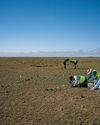
SEARCHING FOR AUSSIE DINOSAURS
Our understanding of where to find ancient life in Australia has been turned on its head by a new appreciation of the country's geology. Now the world is looking to our vast outback as the latest hotspot to locate fossils.
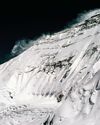
THE HARDEST NIGHT
The first Australian ascent of Mt Everest in 1984 is one of the great feats of mountaineering. Climbed by a small team semi-alpine style, with no bottled oxygen, via the Great (Norton) Couloir, it remains unrepeated 40 years later.
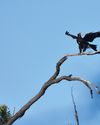
WEDGE-TAILED WONDER
The chance discovery of an eagle nest leads to an extended vigil observing normally hidden behaviours of one of nature's supreme winged marvels.
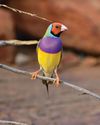
BURDENED BY BEAUTY
Northern Australia's Gouldian finch survives in huge numbers in cages around the world, but its wild population continues to struggle.
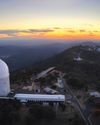
A TELESCOPE FOR A GOLDEN AGE
After a stellar 50 years as one of the country's major scientific assets, the AAT continues to play a major role in keeping Australian astronomy on the world stage.
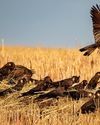
COCKY WHISPERING AT COOMALLO CREEK
This patch of remnant bush on the edge of the West Australian wheatbelt is a place loved by one of Australia's rarest bird species and the man who has studied the site for more than 50 years.

A PIONEERING PAIR
Louisa Atkinson and her mother, Charlotte, were among Australia's earliest authors, and pioneers in women's rights.

THE LONGEST WALK
Lucy Barnard is walking from Argentina to Alaska -the length of the Americas - on an extraordinary journey of endurance and adventure.
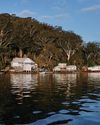
SECLUDED, BUT NOT ALONE
In an era of heightened social isolation, where many of us lead lonely lives, Dangar Island offers the chance to be part of a supportive, connected community.